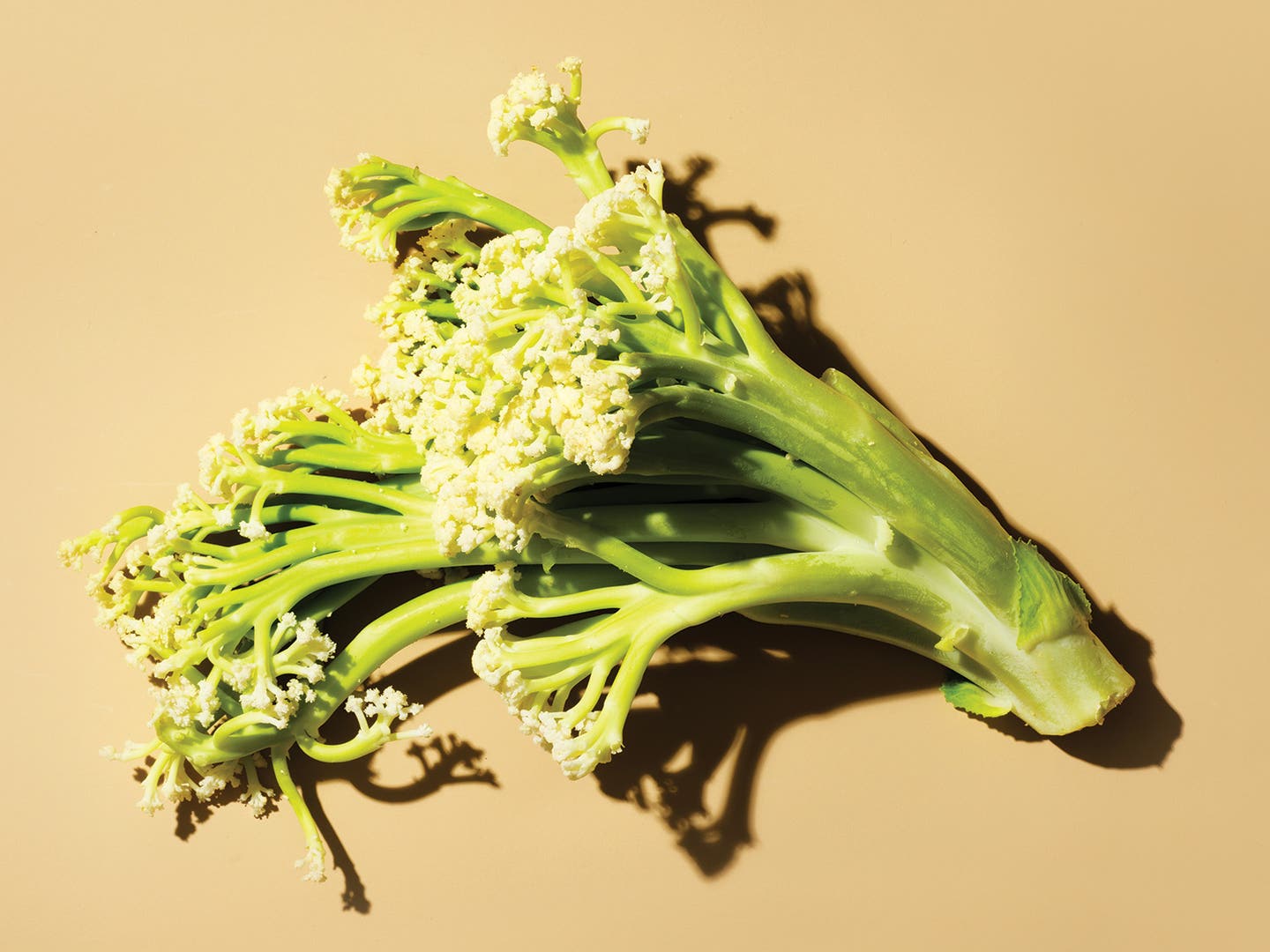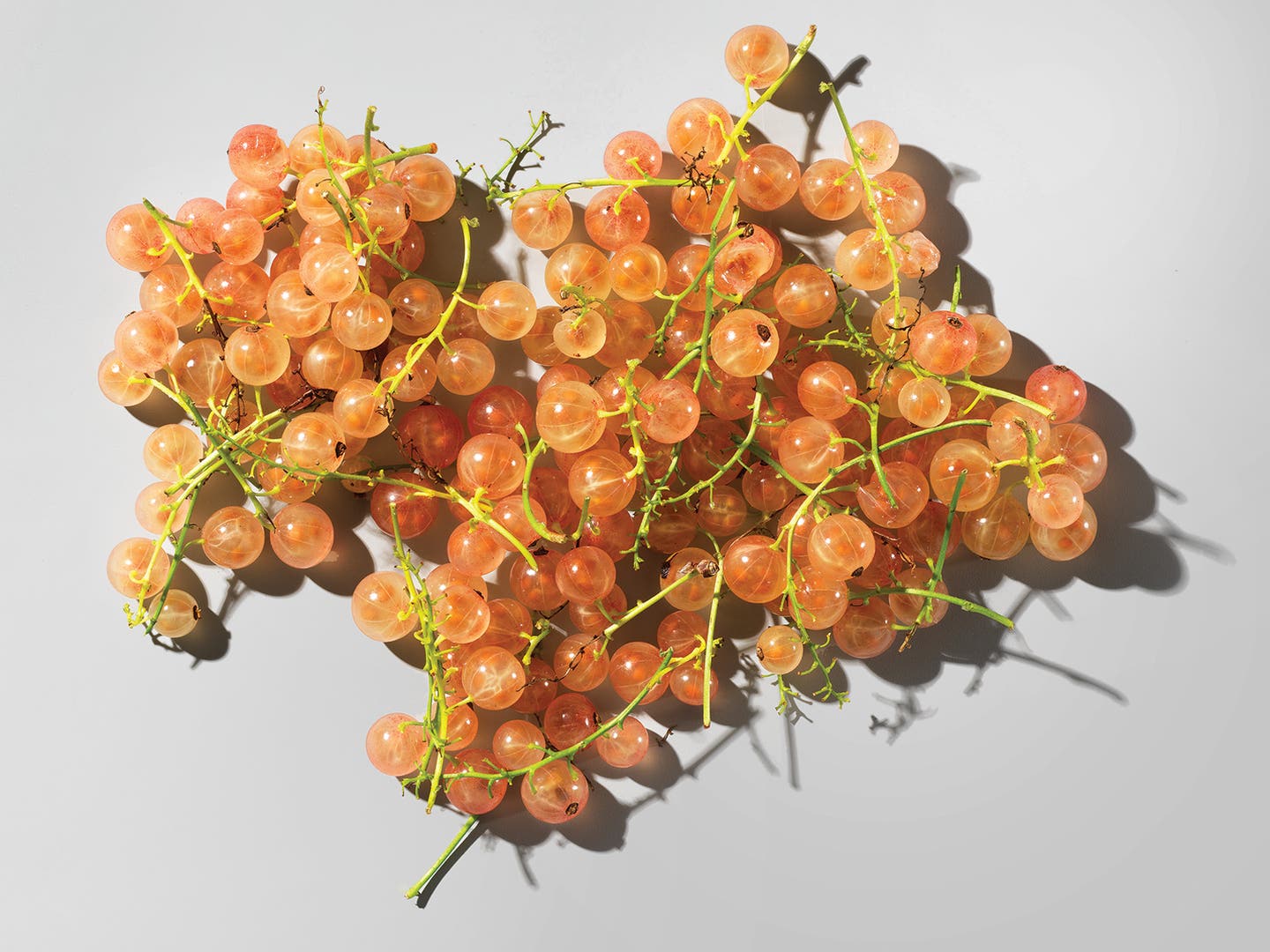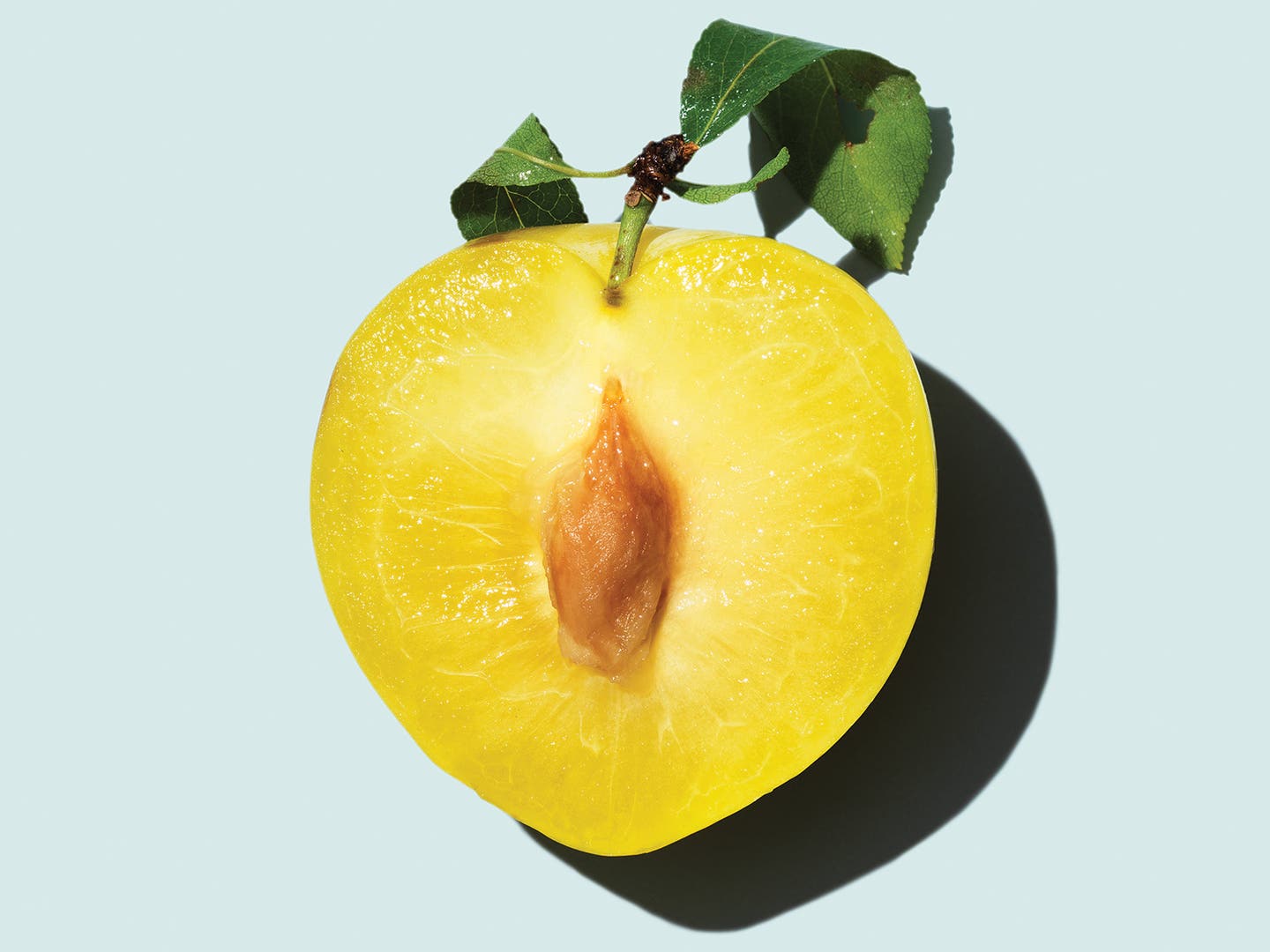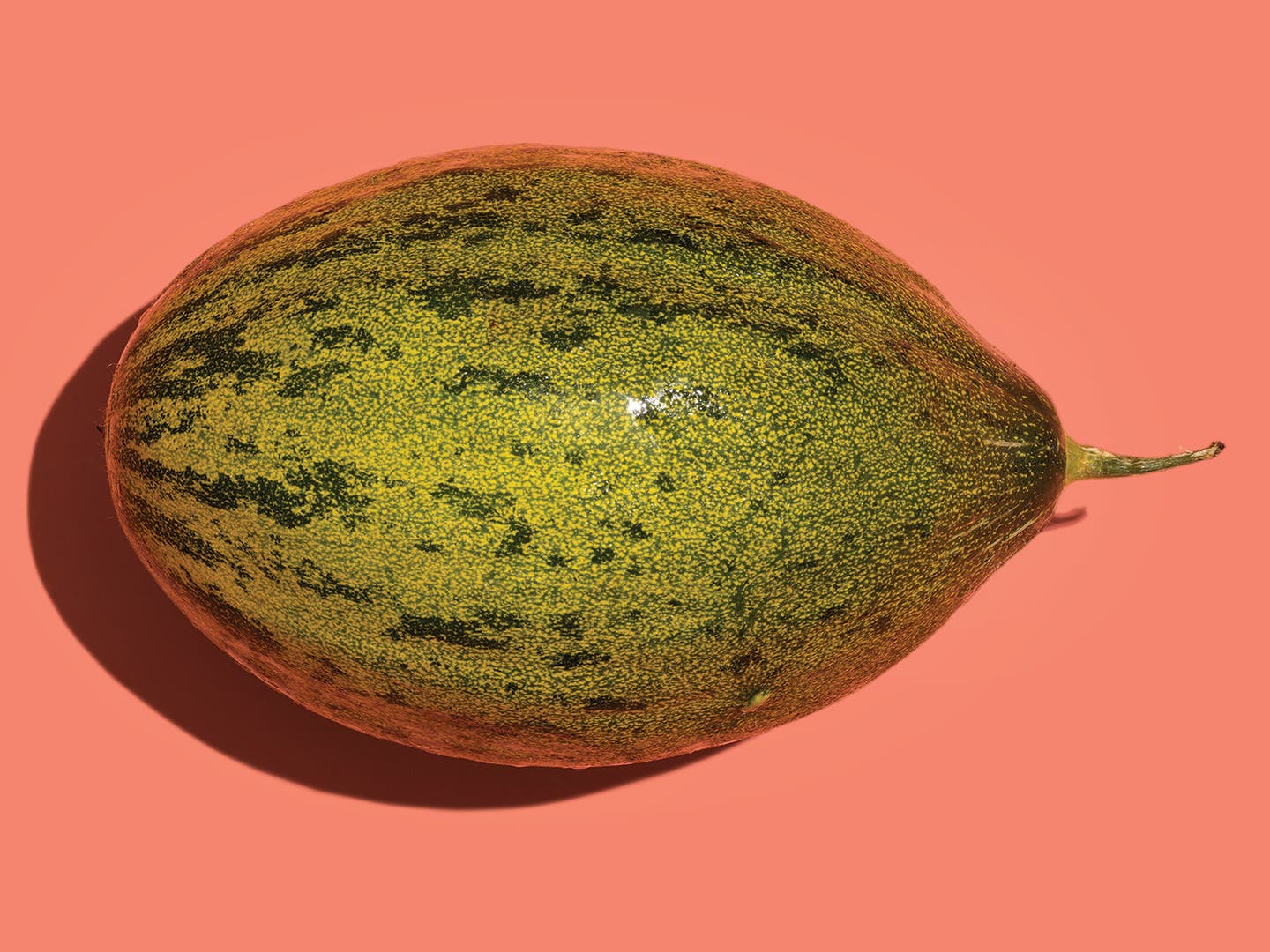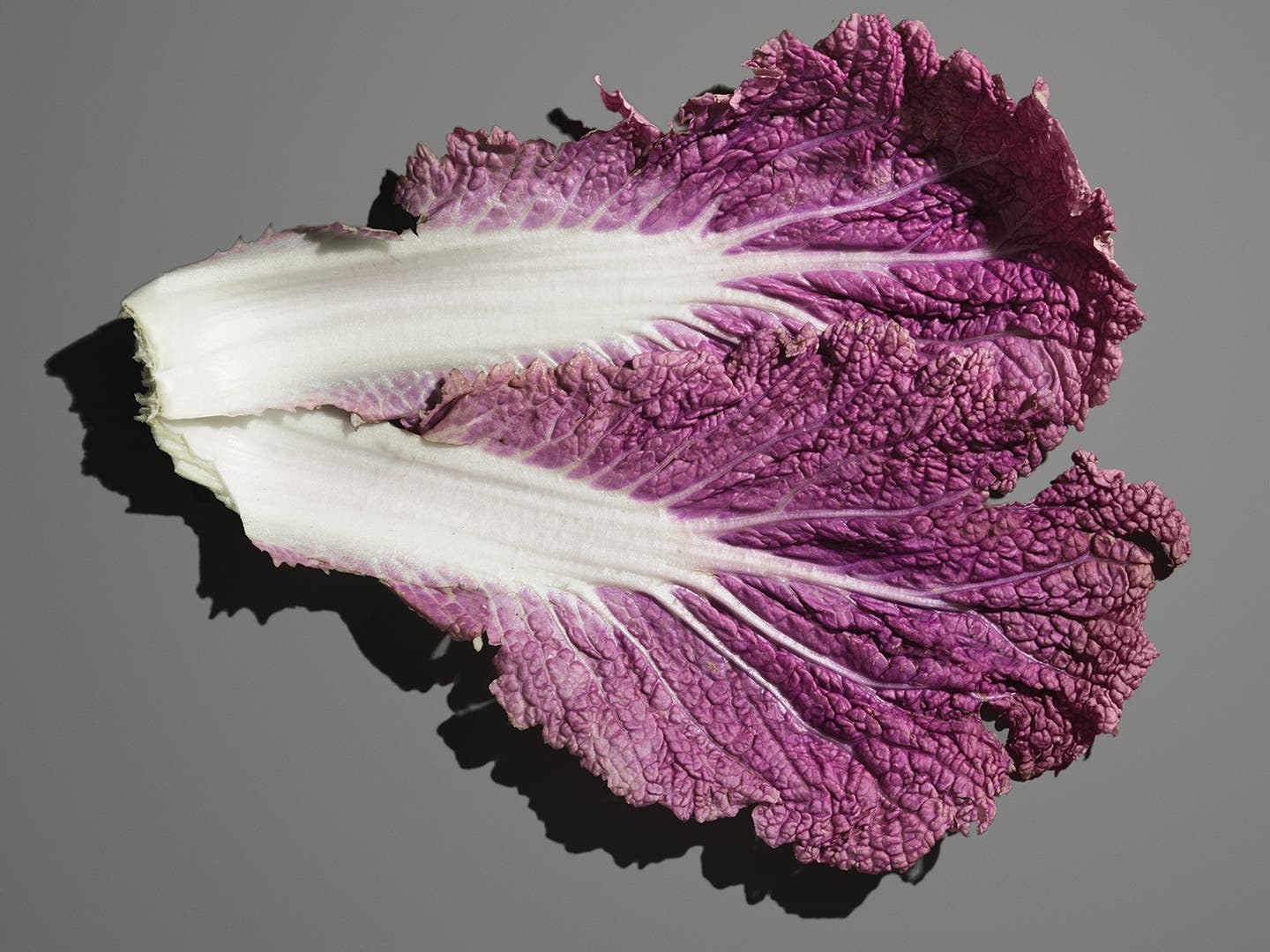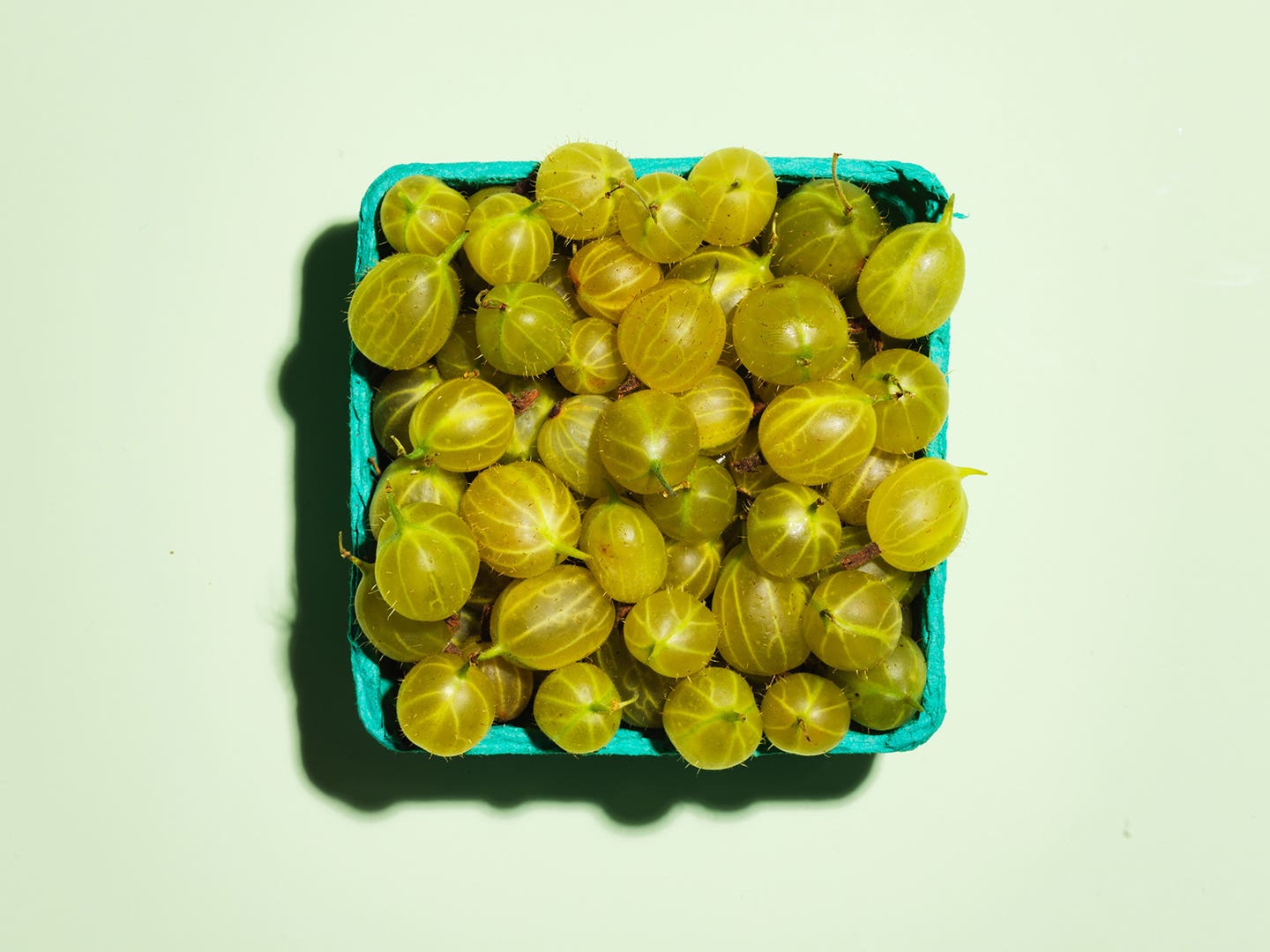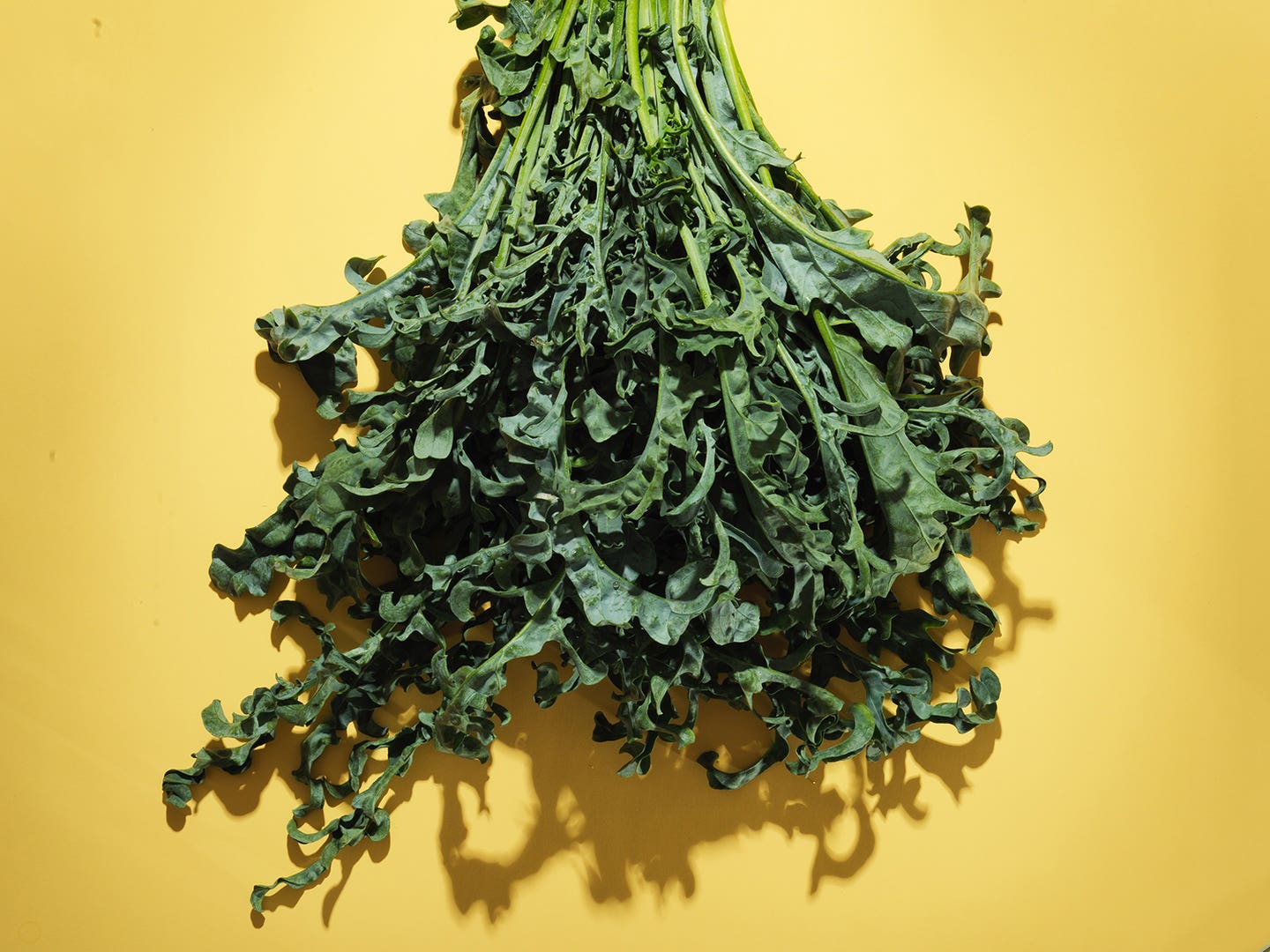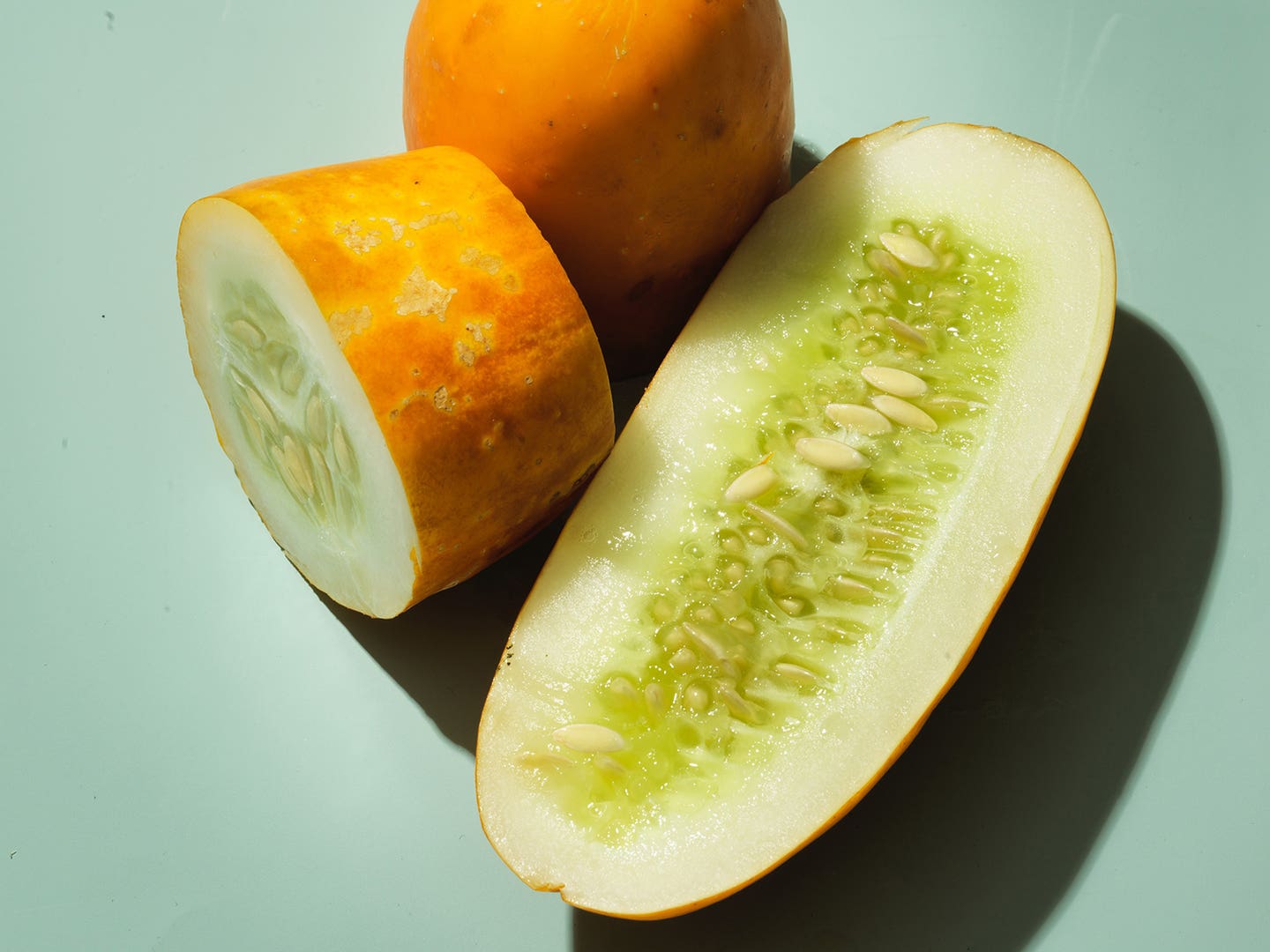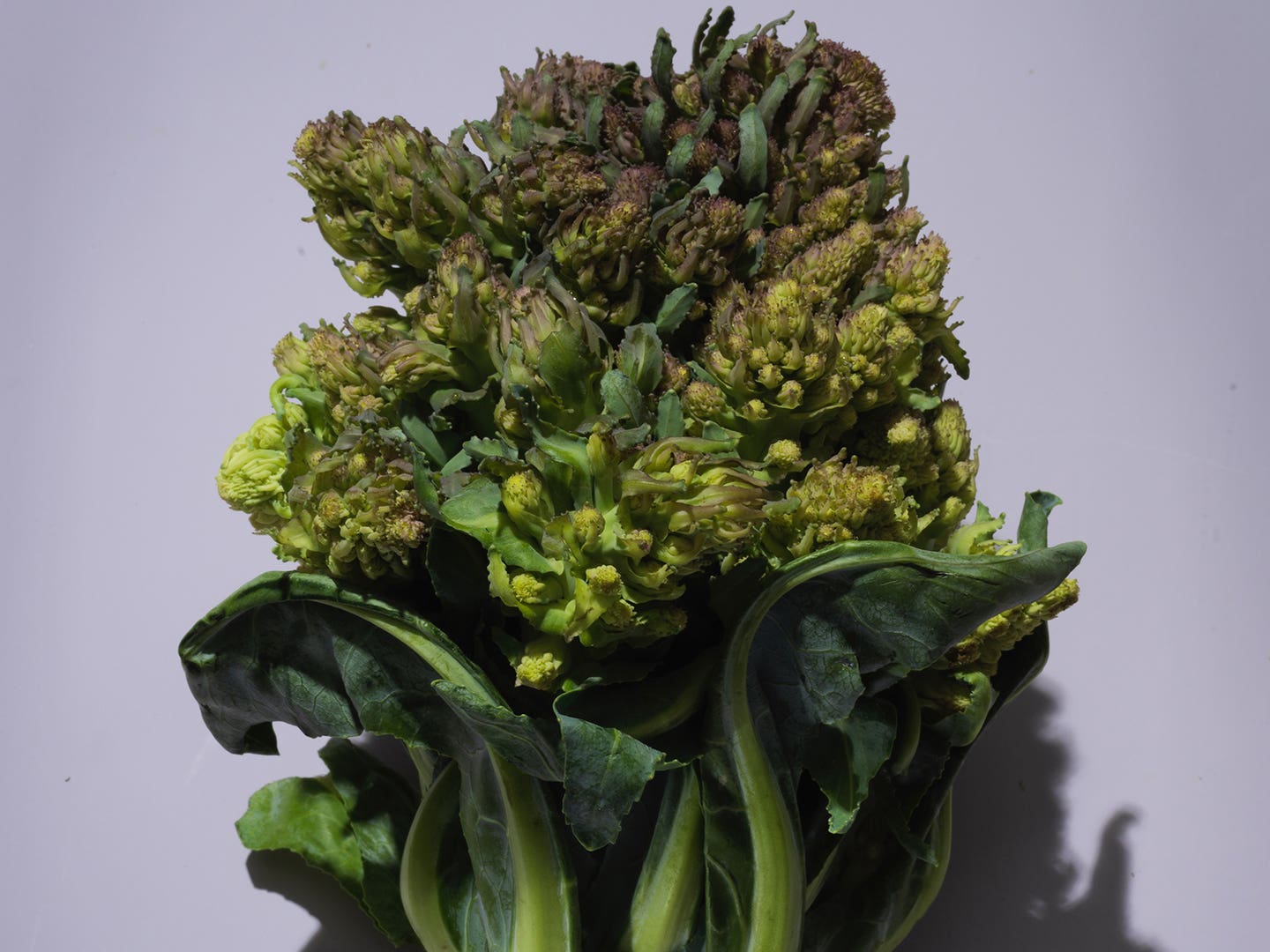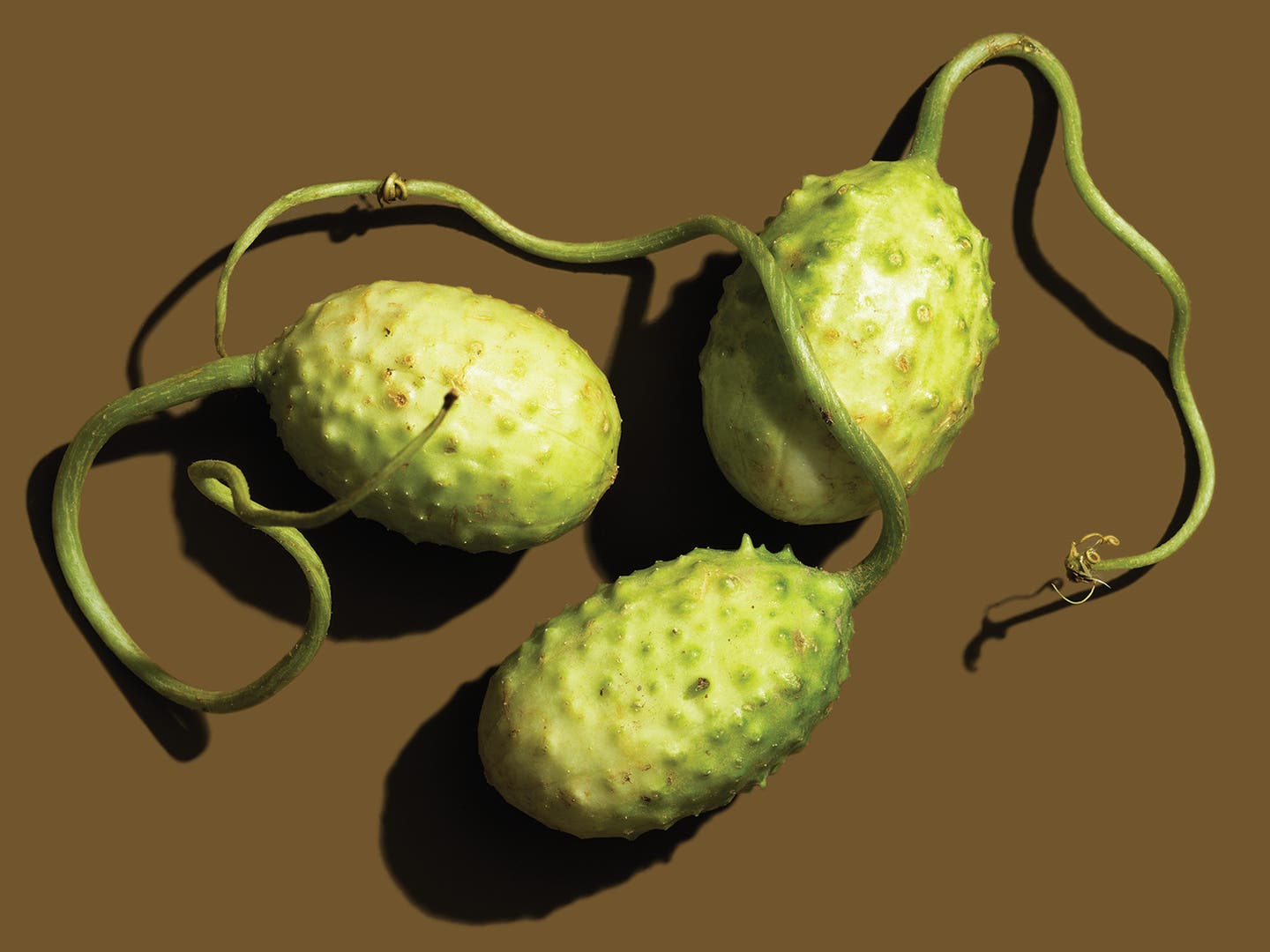
Here’s the Coolest Farmers’ Market Produce You Should Be Trying This Summer
Ever heard of caulilini or burr gherkins?
It's finally high season in the Northeast, when the stalls at New York City's farmers' markets once again become a regular destination for our editors. Though some of us might be loyal to a favorite stone-fruit producer or stalwarts of a particular neighborhood market in Manhattan, we all try to shake up our purchases when something quirky, cool, or downright odd-looking crosses our path. Buying the occasional piece of produce we're less familiar with helps keep our kitchen repertoires and fruit bowls interesting, true, but it also gives farmers the chance to spread their wings and expand the offerings they are able to grow and tend. Here are some of the market gems inspiring us now.
This slender, sculptural cauliflower variety was invented in Salinas, California (we sourced ours from Baldor specialty foods) and is starting to appear in grocery stores. It has dangling, open florets and stems that bend like ballerinas—making it a pretty addition to a crudité platter. More tender than regular cauliflower, it sautes quickly and lets off a milder, sweeter aroma.
Indigenous to the Northeast and historically foraged by Native Americans for medicinal purposes, these translucent berries are tart and delicate—and the pink type is especially sweet. Though well-suited to jams and sauces, in NYC the currants sell at a premium, so we use them on cheese plates or atop desserts like lemon or chocolate tarts and simple glazed cakes.
Thought to be native to Africa and introduced to the U.S. by way of the Caribbean islands, West Indian or Jamaican burr gherkins are each about an inch long and have a pale-green skin that snaps when you bite into it. They work well halved in salads or whole as pickles, the stems serving as a handle to use for fishing them out of a jar and while eating them.
From oblong Italian prune versions to heart-shaped, red-fleshed Elephant Hearts, it's impossible to choose a favorite summer plum. But the Japanese shiro is super-sweet, with a picture-perfect shape and luminous yellow skin and flesh. It is juicy yet hardy enough to hold together in baked goods—an ideal mix-in for brightly colored crumbles and galettes.
These speckled yellow-and-green-skinned fruits with pale, honeydew-like flesh are also called Christmas or Santa Claus melons, purportedly for their ability to last for long stretches of time (“until Christmas”). They are common in Spain, and are grown in the U.S. at Norwich Meadows Farm in New York, as well as some farms in California and Arizona.
The tall leaves of this cabbage—a relative of green Chinese or napa cabbage—have similar crisp, crunchy spines and frilled edges, but the vegetable has a milder, less bitter flavor overall. We love the leaves thinly sliced and added to soups and stir-fries, or stuffed whole and braised, but keep in mind that their color might stain sauces or broths during cooking.
Available both wild and domesticated, these delicately prickly little relatives of the currant were actually illegal in the U.S. for several centuries because they carried a blight called white pine blister rust. Now you can find them at farmers' markets in peak summer. Juicy, plump, and naturally tart, they make an excellent jam or pie filling.
With a flavor like that of a leafy broccoli but the appearance of a slender, heirloom kale, this southern Italian vegetable has edible leaves and stems that tenderize quickly during sautéing. It has a sweet (not bitter) brassica flavor, which is great cooked into pastas, on pizzas, or as a side dish simmered with olive oil and loads of chopped garlic.
These smooth, lightly bitter cukes can grow to impressive size. Since they can develop a thick skin as they grow, consider peeling the outsides as needed. While they’re perfectly good for slicing and snacking on, Chinese yellow cucumbers also make a terrific pickle, maintaining crunch over lengthy brining times.
Shortened from its original Italian name broccolo romanesco or broccolo romano, this Roman-derived brassica has a broccoli-like flavor with a texture and shape more like cauliflower. It roasts well in a high-heat oven, where it can tenderize and caramelize in places against the pan. You can also slice it very thinly and use it in summer salads and grain dishes.
Keep Reading
Continue to Next Story
